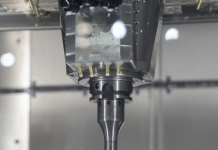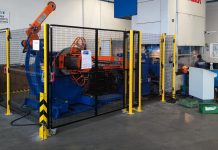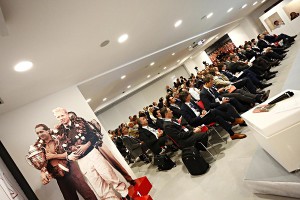 The world metal market, seen from many points of view, with original and in-depth analyses that range from china to europe, from the ukraine crisis to big financial markets, from the new potentialities of the london metal exchange to the ascertainment of the loss of correlation between crb and s&p’s: these the discussion issues of the event by kauffmann&sons.
The world metal market, seen from many points of view, with original and in-depth analyses that range from china to europe, from the ukraine crisis to big financial markets, from the new potentialities of the london metal exchange to the ascertainment of the loss of correlation between crb and s&p’s: these the discussion issues of the event by kauffmann&sons.
Ferrari Museum at Maranello, location of the industrial excellence, was chosen as venue of the main meeting by FARO The International Commodities Club, global platform for the monitoring and coverage of raw materials, listed and not.
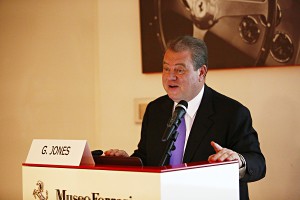 CEO of the London Metal Exchange & Co-Head of Global Markets HKEx and most awaited guest of this FARO meeting, Garry Jones narrated the public the time of deep transformation that LME is living after the takeover by the Hong Kong Stock Exchange in 2012. Today LME benefits from the huge resources coming from Hong Kong to establish a clearing house and to create a new technological platform, state-of-the-art in terms of fastness and stability, which will complete the stock trading carried out in traditional form. Among them, Jones mentioned with special pride the rings where «the prices of commodities are fixed in the light of a mechanism of definition of their values in very short times, with people submitting concrete offers for the market, putting their capitals at stake». The innovations in preparation will not deprive LME of its identity of place where the whole chain of the metal value is represented, from producers to consumers of all types, recyclers and investment funds, improving their performances. About the macro prospects of the market, Jones invited the auditorium to bear in mind that «metals are real economy», and that this ascertainment assumes a meaning rich in perspectives if referred to the Chinese market: an enormous Country where car owners are still only 8.5% of the population, city inhabitants 52%, and in which perhaps the middle class will equal by number European Union’s within 2020.
CEO of the London Metal Exchange & Co-Head of Global Markets HKEx and most awaited guest of this FARO meeting, Garry Jones narrated the public the time of deep transformation that LME is living after the takeover by the Hong Kong Stock Exchange in 2012. Today LME benefits from the huge resources coming from Hong Kong to establish a clearing house and to create a new technological platform, state-of-the-art in terms of fastness and stability, which will complete the stock trading carried out in traditional form. Among them, Jones mentioned with special pride the rings where «the prices of commodities are fixed in the light of a mechanism of definition of their values in very short times, with people submitting concrete offers for the market, putting their capitals at stake». The innovations in preparation will not deprive LME of its identity of place where the whole chain of the metal value is represented, from producers to consumers of all types, recyclers and investment funds, improving their performances. About the macro prospects of the market, Jones invited the auditorium to bear in mind that «metals are real economy», and that this ascertainment assumes a meaning rich in perspectives if referred to the Chinese market: an enormous Country where car owners are still only 8.5% of the population, city inhabitants 52%, and in which perhaps the middle class will equal by number European Union’s within 2020.
Metal markets: a window on the contemporaneous world
The correlation between the world of the global economy and of its protagonists, first of all USA and China, and the metal world is strong, as shown by some speeches delivered on the occasion of FARO.
David Lilley, co-founder of RK Capital Management LLP, started by asking: «Is China’s metal demand saying that we are approaching the collapse?». Fortunately, not. Lilley invited not to be overwhelmed by vain worries looking at the short bars, in January and February, of the histogram of the trend of the metal consumption in China: it is, essentially, a seasonal phenomenon. There will be no meltdown because the Chinese Government has the (political and financial) power to avoid it, and it wants to avoid it, being strongly interested in maintaining a stable context for its operations of rationalization of the economic mechanisms. Internal conditions are favourable, especially due to the limited foreign debt (the Chinese debt, even if huge, is especially with local savers). 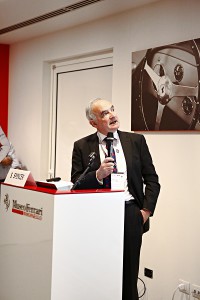
Steven Spencer, Ceo of Traderight talked about non-conflicting brokers and their role in the next future of LME. The benefits for the market deriving from the entry of operators of this type, he explained, are manifold; among them, their capability of aggregating small customers that banks refuse; the price transparency, improved thanks to the stronger competition; the diversification of the risk concentrated in LME turning it away from banks. Certainly, with great difficulties due also to a regulation context that tends to concentrate risks in the major banks, «too big to fail» and destined to be saved at tax payers’ expenses. The notable (and growing) costs of the regulation can be better borne by big dealers that exploit consistent scale economies. There are anyway opportunities, due also to the fact that with Basel 3, in the opinion of Spencer, «bank activities about commodities will decrease by importance and intensity, and the clearing houses will have to open to minor brokers and grant them».
Markus Fyhr, sales manager of the Swedish Boliden, focused on the situation of the lead demand and offer. While from 2012 to 2014 the global car production grew by 4% on average yearly (mostly in China but also in USA and EU), the lead one rose by about 4.5%. The lead consumption is about by 85% for batteries and it is predictable that 80% of the 2012-2014 growth will be in China, where 50% of the consumption resides in the production of batteries for electric bikes. Lead is the most recycled commodity in absolute, by at least 95%. A «sustainable metal» then, according to Fyhr, who stated that the production of worn-out batteries is gaining importance, especially in Europe, where a notable overcapacity grants that in the next years foundries will be able to sustain growing consumptions. Problems will affect the supply aspects. In the opinion of Fyhr, the primary production will suffer from the running out of some deposits, and huge investments will be necessary in extraction projects. Since lead is, like silver, a sub-product of the zinc extraction, to make them it will be necessary that the prices of lead, zinc and silver are suitable for enabling them. Fyhr then explained how the rise, since 2009, of the price of the battery scraps has been putting secondary smelters to hard test, And how the sector will have to deal with a harshening of the environmental legislation that will make the profit challenge even more arduous.
«A generation of debts will be cancelled»
A not reassuring scenario was presented by Simon Hunt, founder of the English consultancy company Simon Hunt Strategic Services and expert in Chinese economy. In the opinion of Hunt, the evolution of the economic and financial world is rapidly eroding the leadership of the United States and the competition between USA and their allies, on one hand, and Russia, China, rising Countries (soon also the Gulf ones) on the other hand, will reach the level of a new cold war. Hunt started form the assessment that the enormous Chinese corporate debt, the highest in the world, is underestimated thanks to artifices that hide an extremely negative cash flow. Central Bank and Chinese institutions aim at making order in the «financial mess» of the Country, to prevent the hyper-inflation and the destruction of its market. «The Chinese Government and the major banks are getting ready to deal with a worse shock than those occurred in 1997 and in 2008», said Hunt. Since «it is no more the Country’s interest to go on accumulating reserves in foreign currency» (in the opinion of Hunt, this was affirmed by the vice-governor of the Central Bank) the surplus will be used to buy physical assets abroad, and to import key commodities in surplus in comparison with the current consumption. In other words, «they will not be the fundamentals of supplied material and material going to the furnaces that will rise the copper price».
Bric, developing Countries, perhaps the Gulf nations, are tired, according to Hunt, to bear the weight of the USA hegemony. The forty-year age of the dollar domain is about to end. Crushed by a huge federal deficit and by an inflation that is much higher than what they make us believe, USA cannot grant the dollar reliability, Russia and China are no more confident and they are travelling alternative roads. They are so developed projects aimed at creating a multi reserve currency unit comprising gold and the main currencies, Yuan and Rouble. This is the scenario of the next global ascent of Yuan. The financial war in course will have heavy political repercussions, and the Ukraine crisis is today more evident, according to Hunt.
«Moreover, the global debt is going on rising faster than GDP. This is unbearable and the financial élite knows», and is fomenting the violent crisis that will burst out starting from 2015.
Concerning metals, and copper in particular, Hunt foresees that the price will skyrocket at the year-end (around 12,000 dollars) and then it will drop, towards a minimum of about 1,500 dollars in 2016 and then stabilizing between 2 and 3,000 dollars. «A generation of debts will be cancelled and will be laid the foundations of a new period of sustainable growth, freed form debt and inflation».
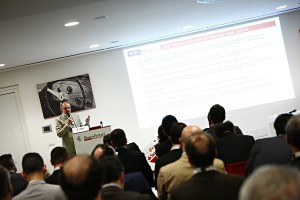 After the dragon, the black swan
After the dragon, the black swan
Not devoid of worries but much less gloomy the forecasts by Edward Meir, senior metals analyst of Intl FCStone. China has a GDP debt risen to 250% but it owns resources and willingness to keep the situation under control. In the opinion of Meyer, the problem is whether there will be a credit crisis: the historical data analysed by Morgan Stanley show that starting from 1960, when a Country has had a debt rise similar to the Chinese one, a credit crisis has unavoidably followed. Worrying are then the modest USA crisis and the first “black swan” of the year, the Ukraine effect on the Russian economy.
Europe is finally leaving the recession bottom behind and is recovering: a growth rate of the industrial production unseen since half 2011, growing car sales, confidence recovery; and the benefits of the announcement «we will do what necessary» by the Governor of the Bce Mario Draghi. Structural problems anyway remain: tax reform, heavy and slow political structure, labour rigidity, high unemployment rate and negative impact of Euro on exports. Moreover, the possible implications of the Russian crisis on the energy import and on the investments beyond the borders. According to Meir, in the course of this year we will progressively reach lower prices, which might however increase in 2015, and perhaps mini-bull markets in the passage from surplus to deficit and with the progressive depletion of stocks. Therefore, after three years of «terrible bear market» there is space for optimism.


